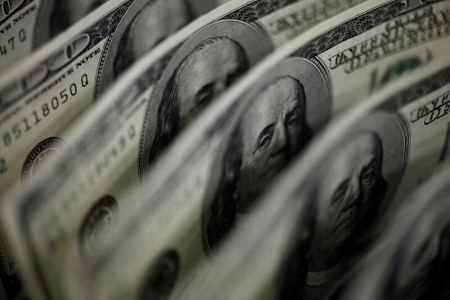




Monthly Economic Update: One for the road
 DOWNLOAD
DOWNLOAD

Inflation Update: Still low, still slow
 DOWNLOAD
DOWNLOAD

Philippines Trade Update: Exports momentum continues
 DOWNLOAD
DOWNLOAD


Dollar mostly flat as market mulls inflation outlook

NEW YORK/LONDON – The dollar retreated against major currencies on Friday as market speculation continues to swirl about the timing of Federal Reserve interest rate cuts amid signs of cooling yet persistent inflation and a softening US economy.
While consumer prices for April, reported on Wednesday, rose less than expected – leading to a risk-on flavor in equity markets – various Fed officials have sounded words of caution about when rates may fall, limiting the dollar’s decline this week.
The dollar index, which tracks the US currency against six peers, slid 0.04% to 104.44 after earlier trading about 0.3% higher.
“The market has turned cautious on the prospect of rate cuts in the near term. The overall picture, though, does appear consistent with a fading of the US exceptionalism trade,” said Karl Schamotta, chief market strategist at Corpay in Toronto.
“We are seeing signs of slowing momentum in the US economy,” Schamotta added. “All of that is translating into less upward pressure on the dollar at the same time you are seeing a brightening of prospects elsewhere.”
Futures markets reduced the outlook for lower US rates, with less than 45 basis points of cuts seen by December, down from almost 50 on Wednesday, and a cut of 21 bps in September, down from almost 25 bps.
“The market over-reacted perhaps on Wednesday, and now we’re seeing a little bit of that over-reaction come off and that inflation could re-accelerate,” said Matt Weller, global head of research at FOREX.com in Grand Rapids, Michigan.
US inflation accelerated in the first quarter amid strong domestic demand after moderating for much of last year. Last month’s slowdown was a relief after data on Tuesday showed a jump in producer prices in April.
Policymakers said on Thursday that still-high inflation warrants keeping rates at current levels, and that reaching the Fed’s 2% inflation target will take longer than previously thought.
A surprisingly large 0.9% jump in import prices on Thursday kindled worries that rising import costs will only add to inflationary pressures.
Even though markets are pricing European rate cuts beginning in June, recent data has shown some upside surprises. Germany’s economy grew more than expected last quarter and investor morale is at a two-year high.
Eurozone consumer inflation data on Friday came in at 2.4% year-on-year in April, in line with a Reuters poll.
The euro rose 0.06% against the dollar to USD 1.0872.
Eurozone policymakers have increased confidence that inflation will ease back to target next year due to easing price pressures, ECB Vice-President Luis de Guindos said on Friday.
Largely disappointing Chinese data on Friday helped keep market risk sentiment in check. Factory output topped forecasts but retail sales slowed and home prices fell at their fastest pace in more than nine years.
Sterling rose 0.31% to USD 1.2705, while the dollar gained 0.17% on the Japanese yen at 155.64.
In cryptocurrency markets, bitcoin was up 1.89% at USD 66,517.00.
(Reporting by Herbert Lash, additional reporting by Iain Withers and Tom Westbrook in Singapore; Editing by Timothy Heritage, Will Dunham, and Emelia Sithole-Matarise)
This article originally appeared on reuters.com





 By Reuters
By Reuters